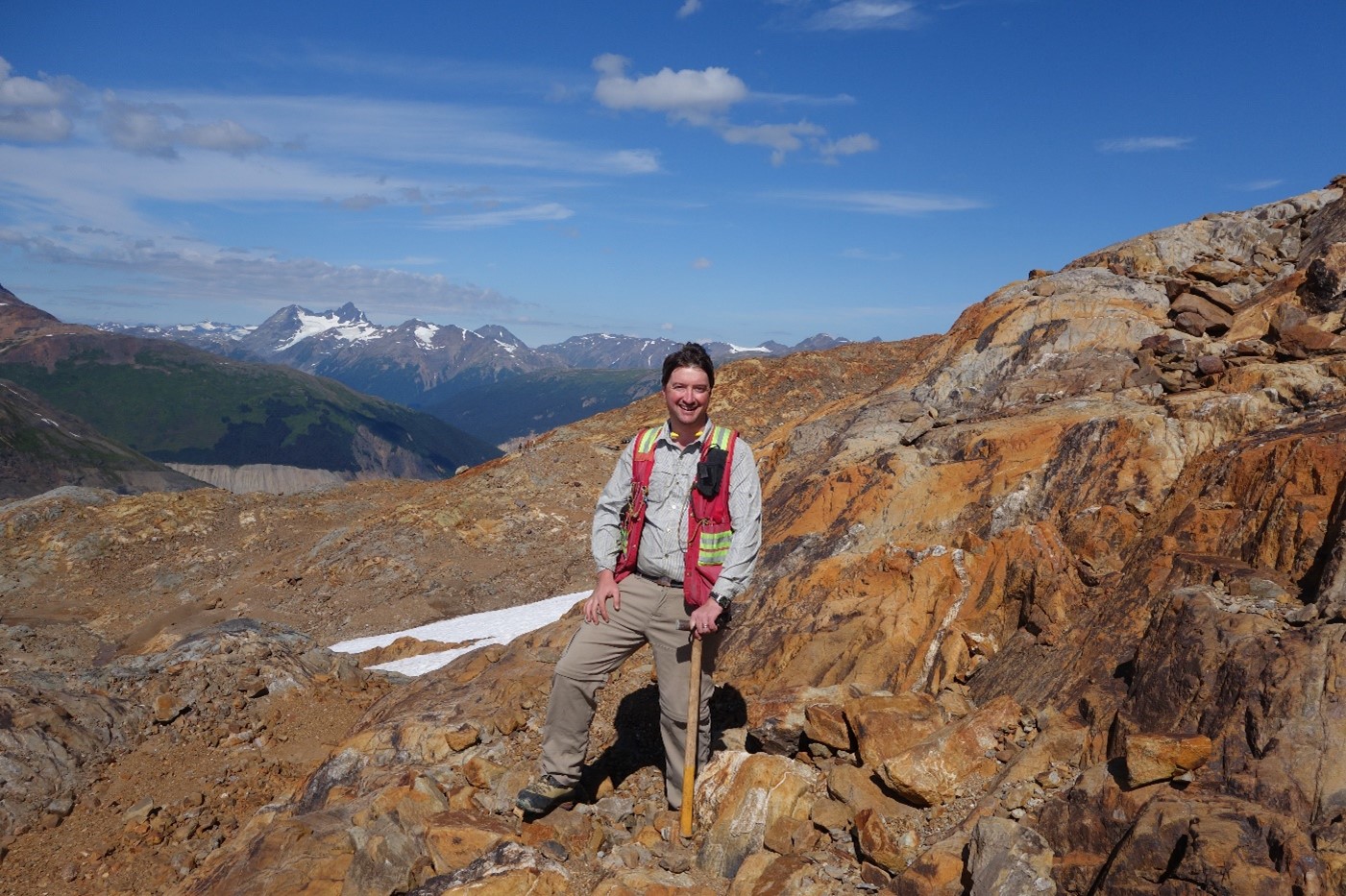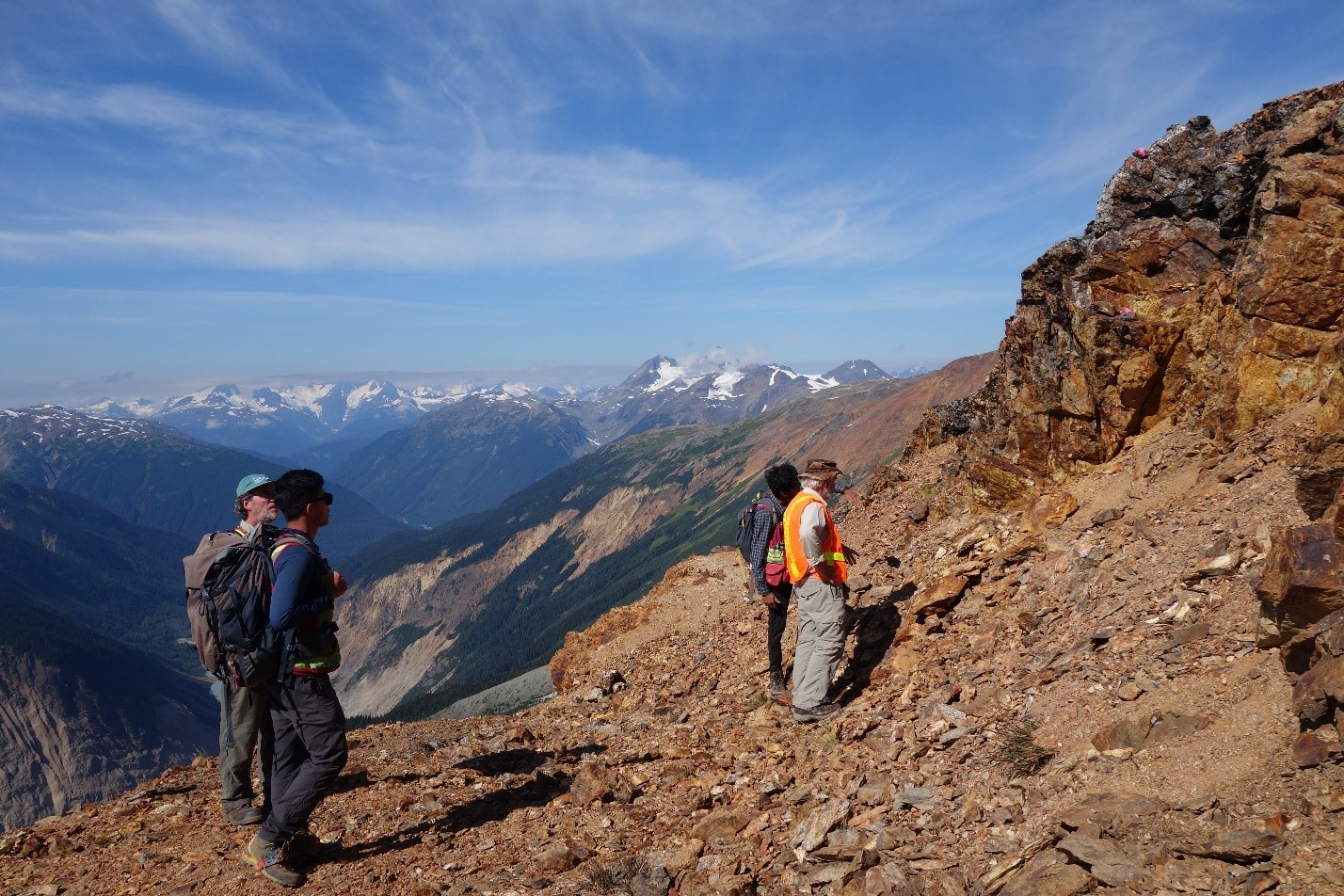
Understanding how gold forms is crucial for knowing where to find it and how to extract it sustainably. McGill researchers have answered a long-standing question in geology that could lead to new ore discoveries.
Researchers traveled to the remote Brucejack gold deposit in northwestern British Columbia to study and collect ancient ore-bearing rocks. The deposit, now on land due to plate tectonic processes, originally formed in a submarine oceanic island arc about 183 million years ago. After analyzing the samples at McGill and the University of Alberta, they found seawater had mixed with ore fluids in the Earth's crust to form gold.
"These rocks, dating back to the Early Jurassic period, are hosted in volcanic and sedimentary formations," said co-author Anthony Williams-Jones, Logan Professor of Geology and Geochemistry in McGill's Department of Earth and Planetary Sciences. "Using high-resolution mass spectrometry, we decoded their unique chemical signatures. The finding of seawater-triggered gold deposition is novel and surprising."
 McGill Postdoctoral Research Fellow Duncan McLeish in his field area at the Brucejack Mine in August, 2022. (Credit: Kevin Ng)
McGill Postdoctoral Research Fellow Duncan McLeish in his field area at the Brucejack Mine in August, 2022. (Credit: Kevin Ng)
Clues from soured milk
The findings build on the McGill team's 2021 discovery that gold nanoparticles combine to form high-grade gold deposits, in a process akin to the way proteins clump together to form curds when milk sours.
"In our new study, we discovered that sodium ions in seawater are what cause gold nanoparticles to clump together, acting like the acid in souring milk and eventually forming gold veins," said lead author Duncan McLeish, a Postdoctoral Research Fellow in McGill's Department of Earth and Planetary Sciences.
The presence of seawater suggests gold veins could form in the seabed. This means untapped gold resources might exist in submarine island arcs and deep ocean trenches, where conditions are prime for gold formation, according to the research published in Proceedings of the National Academy of Sciences of the United States of America.
 The McGill research team studies a mineralized (gold-bearing) vein underground at the Brucejack Mine in August, 2017. (Credit: Duncan McLeish)
The McGill research team studies a mineralized (gold-bearing) vein underground at the Brucejack Mine in August, 2017. (Credit: Duncan McLeish)
 Ultra-high-grade (bonanza) gold is visible in the Brucejack Mine in August, 2022. (Credit: Duncan McLeish)
Ultra-high-grade (bonanza) gold is visible in the Brucejack Mine in August, 2022. (Credit: Duncan McLeish)
Oceans hold promise for gold mining
Gold has long been a precious metal and is now also considered a critical mineral, thanks to its applications in green-energy technologies, electronic devices, medical equipment and various other fields. Land-based mines often produce low-grade ore that requires extensive processing, at significant environmental cost. Discovering high-grade deposits in the ocean depths could help reduce the environmental footprint of gold mining, the scholars said.
"Our findings suggest it may be easier to form the rare but spectacular concentrations of gold found in high-grade gold veins in sub-seafloor settings. With recent interest in mining submarine mineral deposits, our research suggests that Earth's oceanic crust may indeed contain resources, many of which are required for the green-energy transition, at a level never before appreciated," said Williams-Jones.
 McGill Research Associate Jim Clark, PhD Student Kevin Ng, a Newmont Corp. geologist, and McGill Professor Anthony Williams-Jones study a mineralised gold vein showing at the Brucejack Mine in August, 2022. (Credit: Duncan McLeish)
McGill Research Associate Jim Clark, PhD Student Kevin Ng, a Newmont Corp. geologist, and McGill Professor Anthony Williams-Jones study a mineralised gold vein showing at the Brucejack Mine in August, 2022. (Credit: Duncan McLeish)
About the study
"Extreme shifts in pyrite sulfur isotope compositions reveal the path to bonanza gold" by McLeish, D. F., Williams-Jones, A. E., Clark, J. R., & Stern, R. A. was published in Proceedings of the National Academy of Sciences (PNAS) in May 2024.






